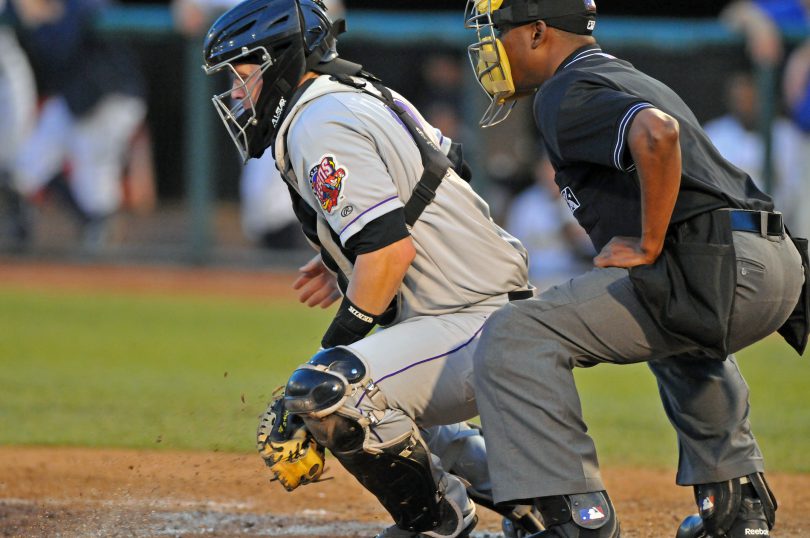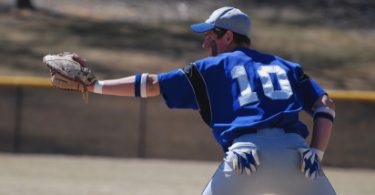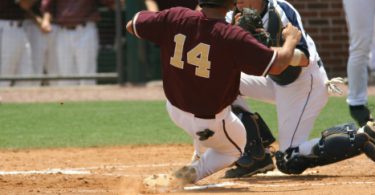The Situation: Man on second, 1 out. The 6-hitter is at the plate, and the count is 1-1. The game is tied in the top of the 6th inning. The pitcher has used his curveball down in the dirt all game.
The Play: The pitcher throws another curve that starts biting down towards the dirt. The runner on second, in his secondary lead, reads the pitch as a ball in dirt and takes off for third. The hitter takes the pitch. The catcher drops to block and the ball short hops right into his glove. He springs to his feet and rifles a throw to third.
The Outcome: The runner sees the catcher come up with the ball cleanly, but he’s already committed to third. The throw is right on target, and even though the play is close, the runner is clearly out, for the second out of the inning.
What Went Wrong?
Nothing! This is a first for Think the Game, but in this play, everyone did their job.
The runner on second was aware of the pitcher’s tendency to bury the curveball down. With 1 out in the inning, he needed to get to third base. There will always be situations when a runner will actively look to take a free 90 feet on a ball in dirt. These are normally situations when it’s worth the risk of being thrown out because of the possible gains of being safe.
A runner on first will be aggressive at all times, because the throw to second is the hardest for the catcher, and getting from first to second can be a game-changer. A runner on second will only be extremely aggressive with 1 out. With nobody out, the runner will allow the hitter to work to get him over. With 2 outs, the runner is content to be in scoring position, and doesn’t want to make the last out of the inning at third. A runner on third will only be very aggressive with 2 outs. With 0 or 1 outs, the runner on third will let the hitter try to do his job.
In this situation, with a runner on second, taking that extra 90 feet creates a number of scoring opportunities with 1 out. The runner was aware of that, and read the ball in dirt early. A good runner, like this one, will read the trajectory of the ball (especially off speed) and know that it’s going to go into the dirt while it is still on the way to the plate. As soon as this runner saw the curveball down, he broke for third.
The catcher used a little bit of luck to turn in a nice defensive play. More often than not, the ball in the dirt is going to bounce off of the catcher and end up on the ground. With the ball on the ground, most runners will have enough time to take the bag. But the catcher was lucky enough to have the ball go right into his glove, and he threw a strike to third to get the out.
Everyone in this situation was prepared and was thinking the game. The runner took a great risk, and the defense made a great play. Whether on offense or defense, be prepared for situations like this. 90 foot victories turn into runs, and runs turn into wins. Always be looking for an edge for your team. Think the game.







